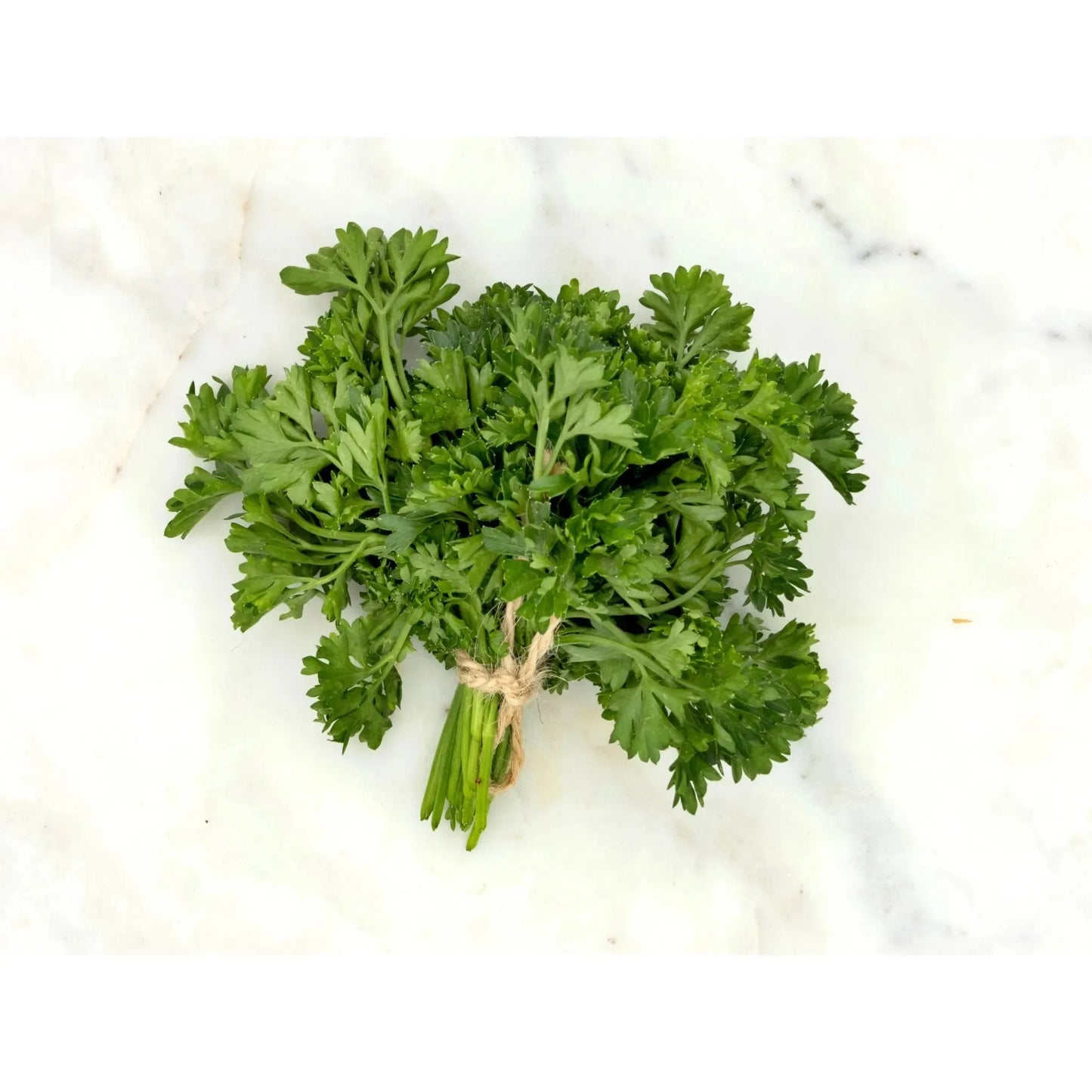Nutrient Farm
Regular price
$3.95 USD
Regular price
Sale price
$3.95 USD
Unit price
/
per
To add to cart, go to the product page and select a purchase option
Subscription Discounts may be combined with other discounts.
Couldn't load pickup availability
Parsley is a widely used culinary herb, known for both its flavor and decorative appeal in cooking. Here are some key aspects of parsley:
-
Types of Parsley:
- There are two main types of parsley: Curly Leaf (Petroselinum crispum) and Flat Leaf or Italian parsley (Petroselinum neapolitanum).
- Curly Leaf parsley has bright green, curly leaves and is often used as a garnish due to its decorative appearance.
- Flat Leaf parsley, with its darker, flat leaves and more robust flavor, is preferred in cooking for its taste.
-
Flavor and Culinary Use:
- Parsley has a fresh, slightly peppery flavor that complements a wide range of dishes.
- It's commonly used in soups, stews, sauces, and salads.
- Parsley is a key ingredient in many Mediterranean and Middle Eastern dishes, including tabbouleh.
-
Nutritional Value:
- Parsley is rich in vitamins and minerals, especially vitamin C, vitamin K, and iron.
- It's also a good source of flavonoids and antioxidants.
-
Medicinal Properties:
- Historically, parsley has been used in traditional medicine for its diuretic properties and to aid digestion.
- It's believed to have anti-inflammatory and immune-boosting benefits.
-
Cultivation:
- Parsley is a biennial plant in temperate climates, meaning it flowers in its second year.
- It grows best in moist, well-drained soil and can be grown in gardens or containers.
- Parsley is also commonly used as a companion plant in gardens due to its ability to repel certain pests.
-
Storage:
- Fresh parsley should be stored in the refrigerator, either in a plastic bag or with the stems in water.
- It can also be dried or frozen for long-term storage, although this may reduce its flavor.
Parsley is a versatile herb that enhances the flavor and nutritional value of a variety of dishes, making it a staple in kitchens worldwide.
Nutrient Farm Herbs are produced with the highest levels of farming stewardship.
Share
View full details


